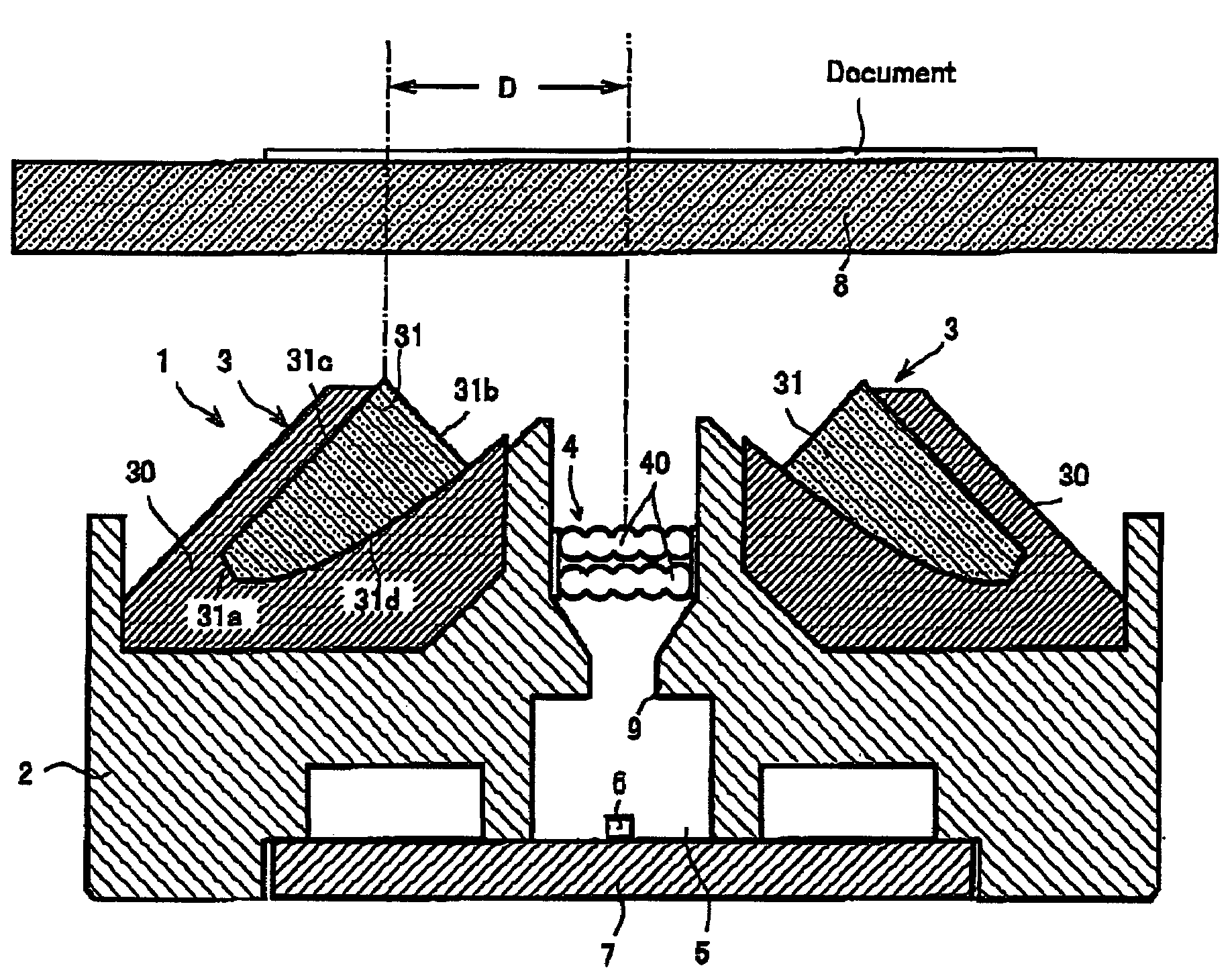Lens array for image sensor and image-scanning device incorporating the lens array
a technology of image sensor and lens array, which is applied in the field of lens array for image sensor and imagescanning device incorporating the lens array, can solve the problems of low self-shape retention, frame cannot be molded with a high degree of accuracy, and it is difficult to install the rod lens array without inclination, so as to prevent the amount of light level
- Summary
- Abstract
- Description
- Claims
- Application Information
AI Technical Summary
Benefits of technology
Problems solved by technology
Method used
Image
Examples
Embodiment Construction
[0037]Preferred embodiments of the present invention will now be described with reference to the accompanying drawings. FIG. 1 is a cross-sectional view of an image-scanning device in which a lens array according to the present invention is incorporated. FIG. 2 is a perspective view of the lens array according to the present invention. FIG. 3 is a graph showing the relationship between a position in a sub-scanning direction and the intensity of light for each amount of elevation of a document surface. FIG. 4 is a view explaining the image formation by the lens array according to the present invention.
[0038]An image-scanning device 1 is transversely provided with line-illuminating devices 3 and 3 within a frame 2 and a lens array 4 is disposed between these line-illuminating devices 3 and 3. Formed at the lower part of the frame 2 is a depressed section 5 on which a base plate 7 to which an image sensor (i.e., a light-receiving element) 6 is secured is mounted. A glass plate 8 on whi...
PUM
 Login to View More
Login to View More Abstract
Description
Claims
Application Information
 Login to View More
Login to View More - R&D
- Intellectual Property
- Life Sciences
- Materials
- Tech Scout
- Unparalleled Data Quality
- Higher Quality Content
- 60% Fewer Hallucinations
Browse by: Latest US Patents, China's latest patents, Technical Efficacy Thesaurus, Application Domain, Technology Topic, Popular Technical Reports.
© 2025 PatSnap. All rights reserved.Legal|Privacy policy|Modern Slavery Act Transparency Statement|Sitemap|About US| Contact US: help@patsnap.com



